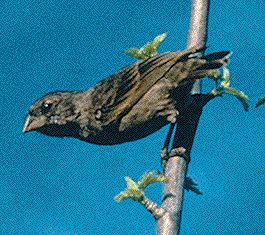The theory of natural selection (part 2) - What are the effects of population subdivisions?

Population subdivision
A species with a number of more or less independent subpopulations is said to have population subdivision. In nature, a species may consist of a number of separate populations, each more or less isolated from the others. The members of a species might, for example, inhabit a number of islands, with each island population being separated by the sea from the others; each island population would evolve to some extent independently. The classic example of this is the Galapagos islands where finches, such as Geospiza fortis (pictured opposite) evolve differently from closely related species on other islands.
An important consequence of population subdivision is the Wahlund effect.
| Next |



